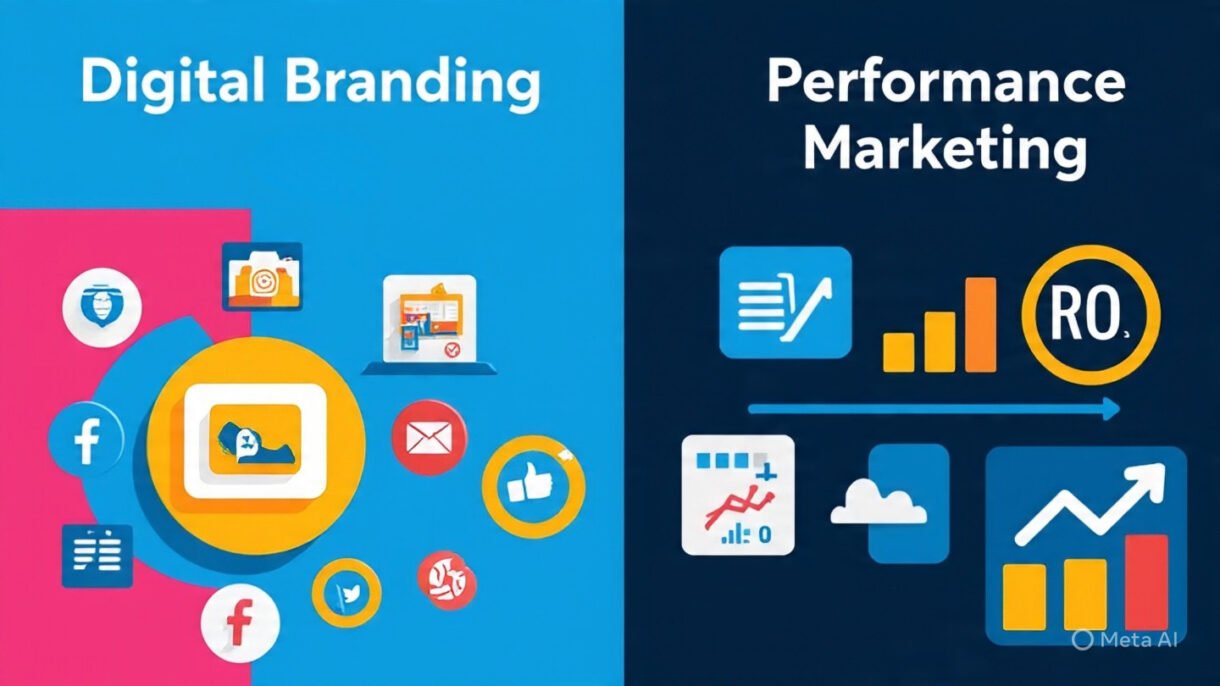Imagine your business as a car. Performance marketing is the accelerator — it gives you speed, immediate movement, and quick results. Digital branding is the engine — it builds the power, reliability, and endurance for the long journey. If you only press the accelerator without a strong engine, you’ll break down fast. If you only focus on the engine and never accelerate, you won’t move forward. For sustainable growth, your marketing strategy — just like driving a car — needs both speed and power in balance.
Defining the Concepts
Digital Branding is about shaping a brand’s identity, voice, and emotional connection in the online world. It creates awareness, trust, and loyalty through storytelling, social media presence, content marketing, and visual identity.
Performance Marketing, on the other hand, focuses on measurable results. Every spent is linked to clicks, leads, or sales. It uses tactics like paid ads, affiliate marketing, retargeting, and data-driven campaigns.
Why the Balance Matters
Globally, businesses often struggle with extremes. Some invest heavily in branding without immediate ROI, while others rely only on performance campaigns, ignoring long-term trust. Both approaches have downsides:
Too much branding = delayed measurable results and high upfront cost.
Too much performance marketing = quick wins but no customer loyalty.
A balanced approach ensures both brand trust and steady conversions.
Benefits of Digital Branding
Trust Building: Enhances credibility in competitive global markets.
Recognition: Strong identity influences purchasing decisions.
Emotional Loyalty: Customers stay even if competitors offer discounts.
Sustainable ROI: Reduces reliance on aggressive ad spend.
Benefits of Performance Marketing
Measurable ROI: Every campaign is trackable.
Speed: Delivers leads and conversions quickly.
Scalability: Budgets can be increased or decreased instantly.
Precision Targeting: Ads reach defined demographics, interests, and geographies.
How to Find the Right Balance
Define Goals Clearly
1. Want awareness? Prioritize branding.
2. Need immediate sales? Push performance campaigns.
Budget Allocation
A common starting point: 60% performance marketing and 40% branding — then adjust based on results.
Integrate Both Approaches
Branding campaigns warm up audiences. Performance ads convert them.
Example: Run a brand storytelling video → Retarget viewers with a special offer.
Track & Optimize
Use analytics to connect branding efforts with performance outcomes. Stronger branding often lowers acquisition costs.
Practical Summary
Just like a car needs both a powerful engine and a responsive accelerator, your marketing strategy needs digital branding for long-term strength and performance marketing for immediate results. In today’s global, highly competitive environment, the right balance ensures that you not only move fast but also reach your destination reliably.
Start with clear objectives, balance your investments, and let data guide you. The most successful brands combine recognition with measurable ROI — and that’s the road to sustainable growth.


